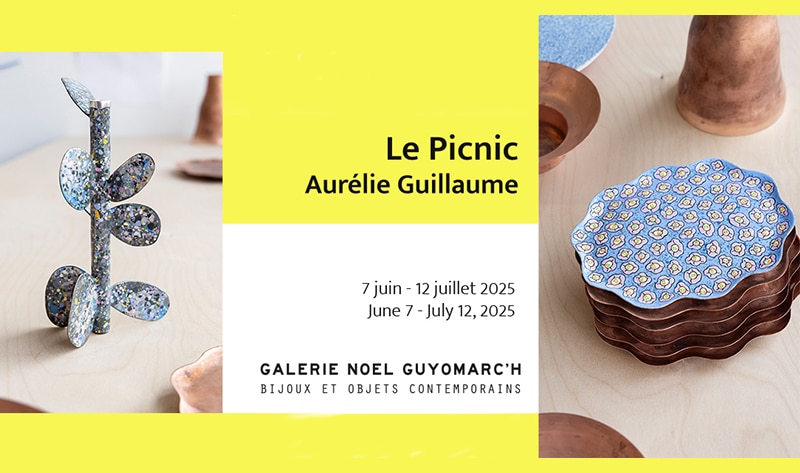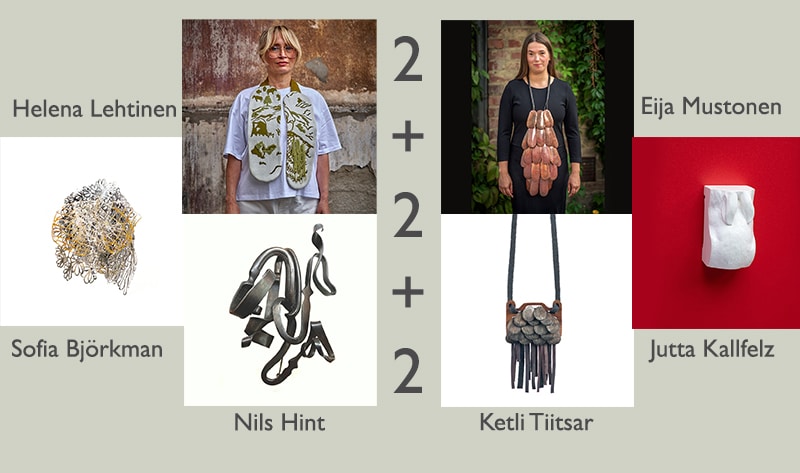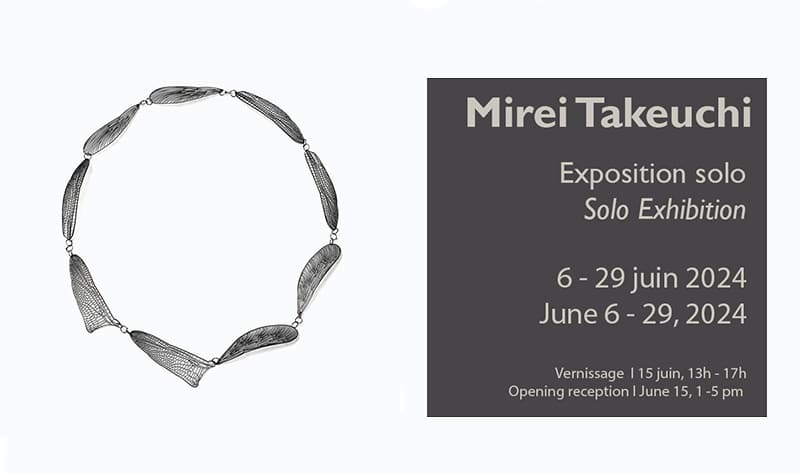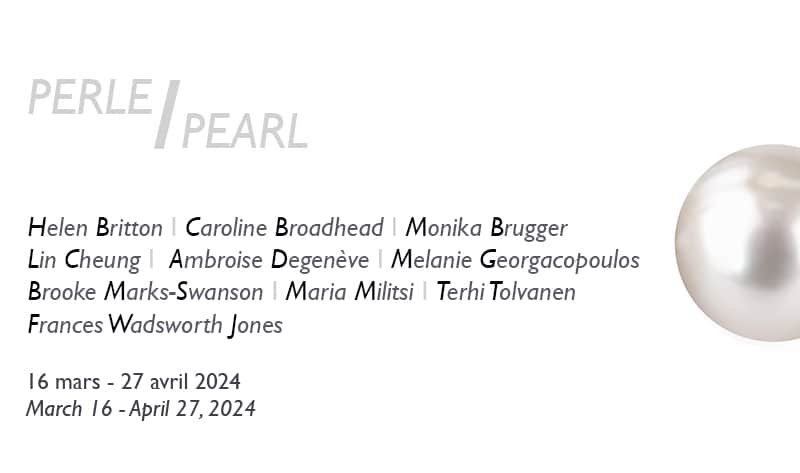
Exposition
From May 3 to 31, 2025, Galerie Noel Guyomarc’h presents Sedimented Histories, an exhibition gathering collaborative art jewelry by Maria Phillips and Seth Papac.
To see the art pieces: Maria Phillips +. Seth Papac

Text written by Charlotte Meyer
Over the course of more than twenty years, Maria Phillips and Seth Papac have moved through many iterations of relationship—teacher and student, artist and assistant, colleagues, and close friends. Through shifting personal lives, evolving creative practices, and diverging professional paths, their bond has remained steady: a relationship grounded in mutual respect, shared sensibility, and sustained presence.
This enduring connection forms the foundation of their collaboration. Rooted in accumulated trust and curiosity, Sedimented Histories draws from the layered strata of their shared experience—personal, material, technical, and emotional. The initial spark for the exhibition was a visit to a mineral specimen collection, where they were captivated by the visual complexity and compositional richness of objects born through processes of natural accumulation: the patient work of time, pressure, and change.
From there, their research expanded to include salt fields and the quietly persistent presence of minerals in daily life—materials we consume, rely on, and often overlook. As the work developed, sedimentation emerged not just as a formal reference but as a conceptual framework—mirroring how their histories, perceptions, and patterns accrue meaning. French philosopher Maurice Merleau-Ponty’s notion of mental sedimentation became especially resonant: the idea that past experiences and cultural learnings settle within us, forming unconscious structures that shape how we see and engage with the world.
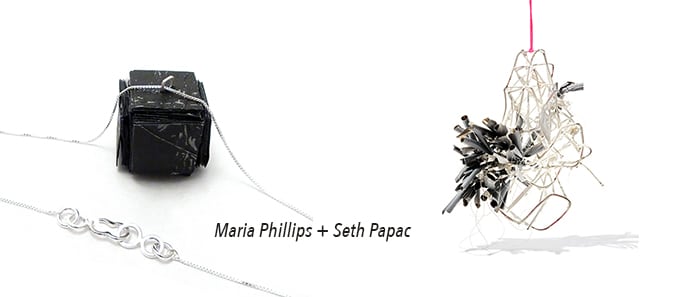
Their process mirrored this phenomenon. Over months of material exchanges and ongoing dialogue, they allowed layers of thought, memory, and form to build slowly—gathered, shaped, and compressed through time.
Maria refers to the resulting works as landfill minerals—fictional formations assembled from discarded materials salvaged from her personal waste stream. Household debris, beach detritus, and street-found fragments are reimagined into stratified, tactile compositions that evoke geological structure while remaining deeply intimate.
Seth approaches the work as a form of creative excavation—mining not only material but also memory, technique, and relational history. Each object is a constructed relic, a fragment formed by the sediment of shared practice, intuition, and care.
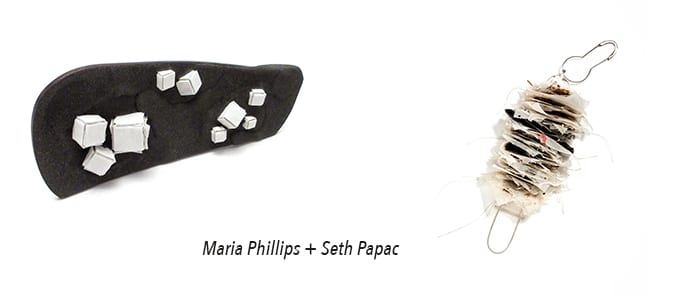
Geologically, minerals and sediments emerge through cycles of weathering and deposition—acts of transformation that echo their own process. The collaboration itself became a kind of slow layering: one gesture settling atop another, one idea shaping the next, until something new emerged. Merleau-Ponty’s philosophy reminds us that such accumulation is not static—it is porous and dynamic, constantly shaped by experience.
In this spirit, Sedimented Histories invites viewers to consider what lies beneath the visible surface—not only in the material world, but in our relationships, rituals, and ways of making meaning. Through the careful reassembly of fragments, the work traces how memory and matter become inseparable, forming new strata of presence and possibility.
Charlotte Meyer is an arts professional passionate about amplifying creative voices through strategic storytelling, inclusive programming, and mission-driven leadership in the cultural sector.
Pour toute question info@galerienoelguyomarch.com
514 -8409362

